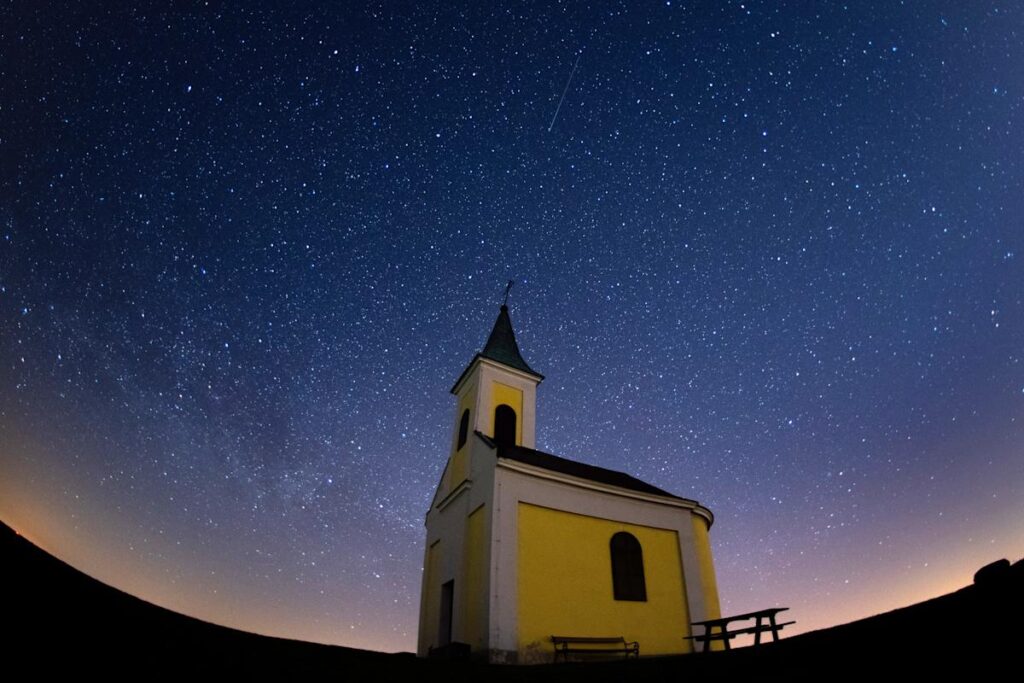The upcoming Lyrid meteor shower in April is the next major show of the year.
It has been active since April 15, but the bright fireballs will peak in activity between Monday and Tuesday, April 21-22.
Best viewed from the Northern Hemisphere, the Lyrid meteor shower is the world’s oldest known and reliably occurs every April as Earth passes through debris from a comet named Thatcher.
However, storms and cloudy weather in the forecast may spoil the view for many in the United States this year. And further complicating matters is that the intrusive moon will be 40% full.
Here’s what to know about the Lyrid meteor shower and how to see it in 2025:
The Lyrids meteor shower streaks across the sky over Austria on April 21, 2020 in Niederhollabrunn. The annual display us caused by the Earth passing through a cloud of debris from a comet called C/186 Thatcher.
Best time to watch Lyrid meteor shower?
The meteors will peak in activity between Monday, April 21 and Tuesday, April 22, as Earth passes through the densest part of Thatcher’s cosmic debris.
After that, the activity will begin to slow down and stop altogether by Saturday, April 26, according to the American Meteor Society.
The timing means the Lyrids’ activity will overlap with another meteor shower, the Eta Aquariids, which will peak on May 5 and 6.
The Lyrids are best viewed in the Northern Hemisphere during the dark hours between midnight and dawn.
How to see the Lyrid Meteor Shower 2025
If the clouds or a bright moon don’t get in the way, the Lyrids should be visible around the globe.
Seasoned stargazers should easily be able to find Vega in the night sky, but if you need help locating it, look above the horizon toward the northeast between 7 and 8 p.m. MT or about 9 to 10 p.m. ET.
Skywatchers may try to avoid it to make the meteors appear longer and more special.
Getting away from city light pollution and street lights will also help to unveil the best sights.
Will it be cloudy during the Lyrid Meteor Shower 2025?
Cloud and storms may interfere with the view of the Lyrid meteor shower for some observers this year, according to AccuWeather.
The commercial weather forecasting service says a storm will move across the eastern half of North America during the peak shower activity, spreading clouds across most of the East Coast. Another storm is expected to bring cloudy conditions through much of the north-central U.S., AccuWeather said.
That makes the West Coast and Southwest U.S., including central Texas, the best place to witness the Lyrids this year. A pocket of the Midwest, including areas west and south of Chicago, should also have good views, according to AccuWeather.
The National Weather Service shared graphics showing the cloud forecast across the U.S. overnight for Monday and Tuesday.
How many Lyrid meteors per hour?
While NASA notes that the Lyrids can surprise watchers with as many as 100 meteors seen per hour, during the peak, 10-20 Lyrid meteors can be seen per hour.
Lyrids don’t tend to leave long glowing dust trains behind them as they streak through the Earth’s atmosphere, but they can produce the occasional bright flash called a fireball.
What causes the Lyrid meteors?
Meteor showers occur when Earth passes through the debris left by comets and other space objects as they orbit the sun. The debris — space rocks known as meteoroids — collide with Earth’s atmosphere at high speed and disintegrate, creating fiery and colorful streaks in the sky, according to NASA.
Those resulting fireballs, better known as “shooting stars,” are meteors. If meteoroids survive their trip to Earth without burning up in the atmosphere, they are called meteorites, according to NASA.
More: View images of total lunar eclipse, ‘blood moon’ from El Paso, Texas
Source: USAToday
This article originally appeared on El Paso Times: What time is the meteor shower tonight? Here’s when to see Lyrid 2025
Read the full article here


